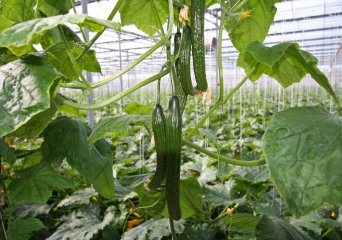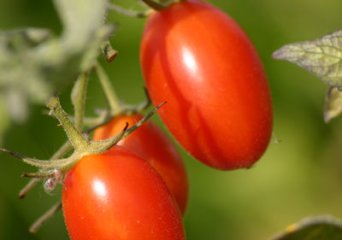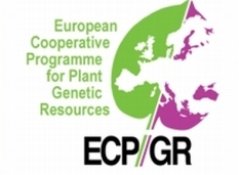
CGN fruit vegetables collection
The fruit vegetables collection of CGN (tomato, pepper, eggplant, cucumber and melon) originate predominantly from the former Institute for Horticultural Plant Breeding (IVT) where they were used as working collections for pre-breeding purposes.

CGN cucumber collection
The history of the cucumber collection is analog to the CGN collections of tomato, pepper, eggplant and melon and described in the general page of the fruit vegetables.

CGN eggplant collection
The history of the eggplant collection is analog to the CGN collections of tomato, pepper, cucumber and melon and described in the general page of the fruit vegetables.

CGN melon collection
The history of the melon collection is analog to the CGN collections of tomato, pepper, eggplant and cucumber and described in the general page of the fruit vegetables. It was adopted in 2005, this more recently than the other fruit vegetables.

CGN pepper collection
The history of the pepper collection is analog to the CGN collections of tomato, eggplant, cucumber and melon and described in the general page of the fruit vegetables.

CGN tomato collection
In 1999 the original name Solanum lycopersicum (Heiser and Anderson 1999) has been reintroduced. Rick (1976) proposed earlier to divide the genus Lycopersicon into two subgenera, the ‘lycopersicum complex’ and the ‘peruvianum complex’ (Taylor and Al-Kummer 1982; Heuvelink 2004).
CGN adopted in 1992 and 1993 the tomato, pepper, eggplant and cucumber collections and the melon collection in 2005 (Van Dooijeweert and Van der Wouw 2011). The collections include material from Dutch and foreign seed firms, botanical gardens and genebanks like the USDA Plant Introduction Stations. In this context the University of Davis, USA donated a large number of wild species of tomato and the University of Reading, UK a large number of pepper accessions (De Groot and Boukema 1997).
The IVT fruit vegetable working collections were extended with samples from expedition missions. To this end the CGN fruit vegetable collections have been enlarged through IBPGR funded expeditions to Pakistan (1981), Egypt (1985/86) and collecting expeditions to Uzbekistan and Kyrgystan (1997, 1999). The latter expeditions in cooperation with the Uzbekistan Research Institute of Plant Industry and the Vavilov Institute in Russia (van Soest, 1998). The collection of eggplant was significantly enlarged with material from IBPGR missions in the 1980s, which took place mainly in West Africa. In 2017 a melon collecting expedition took place in Uzbekistan, enriching this collection with Central Asian material (Kik et al. 2017).
The fruit vegetable collection acquired before 1998 was rationalized by CGN via rejecting duplicates and hybrids. For melon only the IVT accessions which could not be found in other collections were adopted. The quality and quantity of the seeds of these collections were assessed and material meeting the CGN standards were made available to users. Many accessions did not meet the standards and needed to be regenerated (De Groot and Boukema 1997). In collaboration with Dutch breeding companies, organised in Plantum NL, these accessions have been regenerated since 1998.
In the period 2000-2004 all passport data were systematically reviewed. During 2005-2006 the fruit vegetable collections were rationalized by removing redundant germplasm based on analysis of passport data.
Material can be requested through the CGN on-line ordering facility. Professional users will receive samples of 25 seeds under the terms of the SMTA. Plant breeding companies, research institutes and universities are the most frequent users of the fruit vegetable collections.
International cooperation
CGN manages and hosts the ECPGR eggplant database and the ECPGR tomato database, in which data of more than 21,000 accessions from 38 collections can be found. Currently, CGN chairs the Solanaceae Working Group of the European Cooperative Programme for Plant Genetic Resources (ECPGR). In this context CGN participated in two projects namely

- 2000-2005: Eggplant Genetic Resources Network; Management, Conservation, and Utilization of Genetic Resources of Eggplants (Project RESGEN PL 98-113), and
- 2014-2017: Regeneration together with COMAV-UPV, Valencia Spain of Spanish landraces of pepper, collected in the 1980’s.
References
De Groot, E.C., I.W. Boukema (1997) Economisch belangrijke vruchtgroenten geconserveerd. Prophyta 51 (2): 14-16.
Heiser, C., G. Anderson (1999). ‘New’ solanums. In: Janick, J. (ed) Perspectives on new crops and new uses. ASHS Press, Alexandria, Virginia, pp. 379-384.
Kik C, FO Khasanov and A Esankulov (2017). Report of a melon collecting expedition in Uzbekistan. Centre for Genetic Resources, the Netherlands (CGN), Wageningen University and Research, CGN report 39. 26 pp.
Kochieva, E.Z., N.N. Ryzhova, W. van Dooijeweert, I.W. Boukema, P. Arens (2004). Assessment of genetic relationships in the genus Capsicum using different DNA marker systems. Proceedings of the XIIth EUCARPIA Meeting on Genetics and Breeding of Capsicum and Eggplant, May 17-19, 2004, Noordwijkerhout, the Netherlands.
Lv, J., J. Qi, Q. Shi, D. Shen, S. Zhang, G. Shao, H. Li, Z. Sun, Y. Weng, Y. Shang, X. Gu, X. Li, X. Zhu, J. Zhang, R. van Treuren, W. van Dooijeweert, Z. Zhang, S. Huang (2012). Genetic diversity and population structure of cucumber (Cucumis sativus L.). PLoS ONE 7(10), e46919. doi:10.1371/journal.pone.0046919.
Rhyzhova, N.N., W. van Dooijeweert, E.Z. Kochieva (2008). Genetic diversity of Capsicum baccatum revealed by AFLP Assessment. Proceedings of the 18th EUCARPIA General Congress, September 9-12, 2008, Valencia, Spain.
Taylor, I. B., M.K. Al-Kummer (1982). The formation of complex hybrids between Lycopersicon esculentum and L. peruvianum, and their potential use in promoting interspecific gene transfer. Theor. Appl. Genet. 61, 59-63.
Van Dooijeweert Willem, Mark van der Wouw, CGN stelt meloenen veilig, bericht op Groen Kennisnet, (2 september 2011).
Van Dooijeweert, W. (2002) The status of the cucumber (Cucumis sativus) collection of CGN. In: L. Maggioni, M. José Diez, B. Pico Sirvent, compilers. Report of a Working Group on Cucurbits. Ad hoc Meeting, 19 January 2002, Adana, Turkey, IPGRI, Rome, Italy. pp 33-35.
Van Dooijeweert, W., I.W. Boukema (2002). The status of the Solanaceae collection of CGN. In: L. Maggioni, M. Daunay, compilers. Report of a Working Group on Solanaceae. Ad hoc Meeting, 21 September 2001, Nijmegen, The Netherlands, IPGRI, Rome, Italy. pp 58-60.
Van Soest, L.J.M., K.i. Baimatov, V.F. Chapurin, A.P. Pimakhov (1998) Multicrop collecting mission to Uzbekistan. Plant Genetic Resources Newsletter 116: 32-35.



